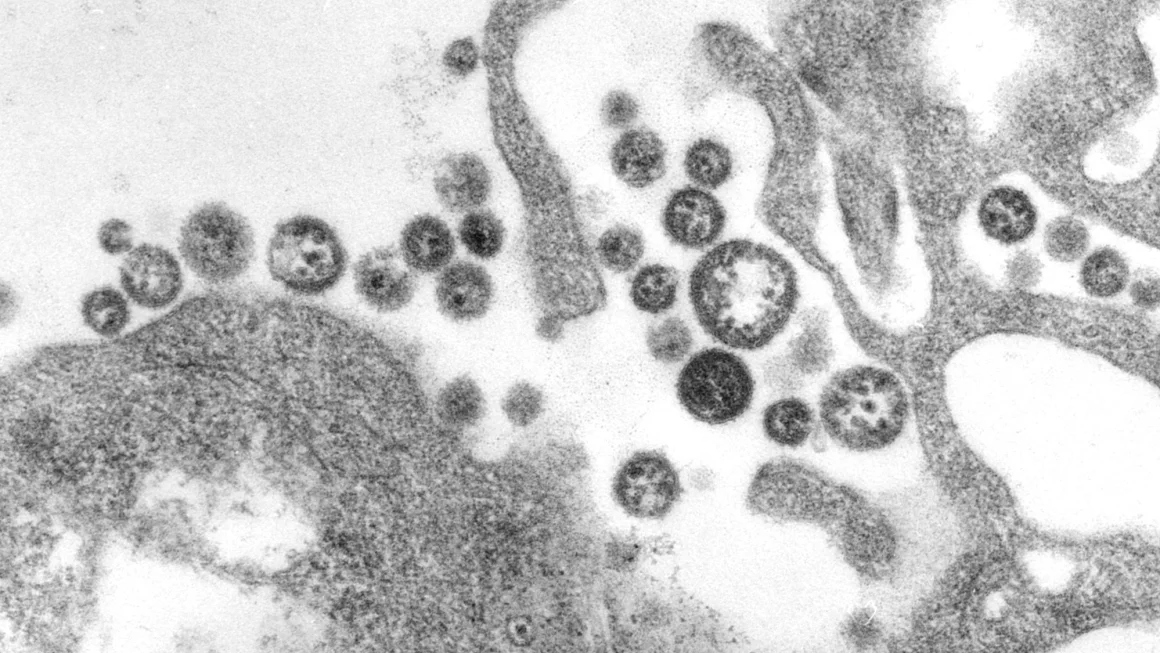
The current risk of Lassa virus transmission in the US is “incredibly low,” Iowa’s medical director says. CS Goldsmith, P. Rollin, M. Bowen/CDC
A resident of eastern Iowa who had recently traveled to West Africa died after catching Lassa fever, state officials said Monday. The virus, which is in the same viral hemorrhagic fever category as Ebola, is rarely seen in the United States.
The Iowa Department of Health and Human Services announced the death Monday but did not release the person’s name and disclosed few details about them. Preliminary tests were presumptively positive for the virus, and the US Centers for Disease Control and Prevention is working to confirm the diagnosis.
No cases of Marburg have been reported outside Rwanda as part of this outbreak, and officials say the current risk to the US is low.
The department said the person was middle-aged and had traveled to West Africa, where it is believed they contracted the virus.
The current risk of transmission in the United States is “incredibly low,” according to Iowa State Medical Director Dr. Robert Kruse.
Each year, about 100,000 to 300,000 people become infected with Lassa fever in West Africa, where the disease is endemic, according to the Center for Infectious Disease Research & Policy at the University of Minnesota. Since 1969, there have been only eight known cases in the US, all of them travel-related.
It’s even rarer for someone to die from Lassa fever. The disease has an overall fatality rate of just 1%, according to the World Health Organization.
In severe cases, the patient may have bleeding; difficulty breathing; pain in the chest, back and abdomen; and vomiting.
Someone with milder symptoms may develop a slight fever, feel tired or have a headache. Most people who are infected with Lassa virus have no symptoms at all.
Lassa fever can spread between humans but not through casual contact. Typically, the virus spreads only when someone comes into contact with an infected person’s bodily fluids.
Lassa fever most commonly spreads through the multimammate rat in West Africa. People can get sick after touching objects contaminated with rat feces or urine, or after eating food that’s been contaminated. Some people also get sick after eating the rats themselves, according to the CDC.
Prompt treatment is considered key for Lassa fever. Ribavirin, a broad-spectrum antiviral that works well against RNA viruses and is also used to treat hepatitis C, is the primary treatment.
Kruse said his department is investigating and monitoring the situation in conjunction with the CDC and local public health partners. The agencies are trying to determine who may have had close contact with the patient, who had been treated in isolation at the University of Iowa Health Care Medical Center.
The CDC says the patient was not sick while traveling, so the risk to other airline passengers is extremely low.

Check out our AAV CDMO service to expedite your gene therapy research
PackGene Biotech is a world-leading CRO and CDMO, excelling in AAV vectors, mRNA, plasmid DNA, and lentiviral vector solutions. Our comprehensive offerings span from vector design and construction to AAV, lentivirus, and mRNA services. With a sharp focus on early-stage drug discovery, preclinical development, and cell and gene therapy trials, we deliver cost-effective, dependable, and scalable production solutions. Leveraging our groundbreaking π-alpha 293 AAV high-yield platform, we amplify AAV production by up to 10-fold, yielding up to 1e+17vg per batch to meet diverse commercial and clinical project needs. Moreover, our tailored mRNA and LNP products and services cater to every stage of drug and vaccine development, from research to GMP production, providing a seamless, end-to-end solution.
Related News
[2024/12/20] Gene and Cell Therapy- weekly digest from PackGene
FeaturedNewsArticlesPackGene's NewsletterReceive the latest news and insights to your inbox.About PackGenePackGene Biotech is a world-leading CRO and CDMO, excelling in AAV vectors, mRNA, plasmid DNA, and lentiviral vector solutions. Our comprehensive offerings span...
Sangamo and Astellas Collaborate to Advance Neurological Gene Therapies Using AAV Capsid Technology
Sangamo Therapeutics, Inc. (Nasdaq: SGMO), a leader in genomic medicine, and Astellas Pharma Inc. (TSE: 4503), a global innovator in life sciences, have partnered under a new license agreement. This collaboration centers around Sangamo’s cutting-edge neurotropic AAV...
Inceptor Bio and GRIT Bio Announce Strategic Partnership to Advance IB-T101, a Next-Generation Solid Tumor CAR-T Utilizing the OUTLAST™ Platform
SHANGHAI and MORRISVILLE, N.C., Dec. 18, 2024 /PRNewswire/ -- Inceptor Bio, a leading innovator in cell therapy, and GRIT Bio, a clinical-stage immunotherapy developer, today announced a strategic partnership to advance IB-T101, a potentially best-in-class CAR-T...
Proof-of-concept study bioengineers therapeutics for improved cancer treatment
Credit: Pixabay/CC0 Public DomainA team of Children's Medical Research Institute (CMRI) scientists has identified a new method for producing a therapeutic product that has the potential to improve the treatment of cancer. The work by Associate Professor Leszek...
Related Services

AAV Packaging Services
READ MORE

Off-the-Shelf AAV Products
READ MORE

